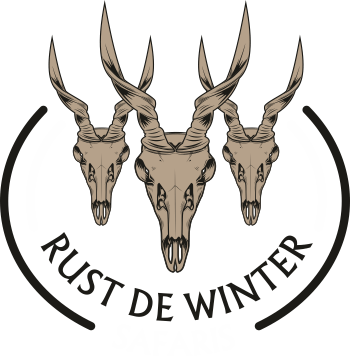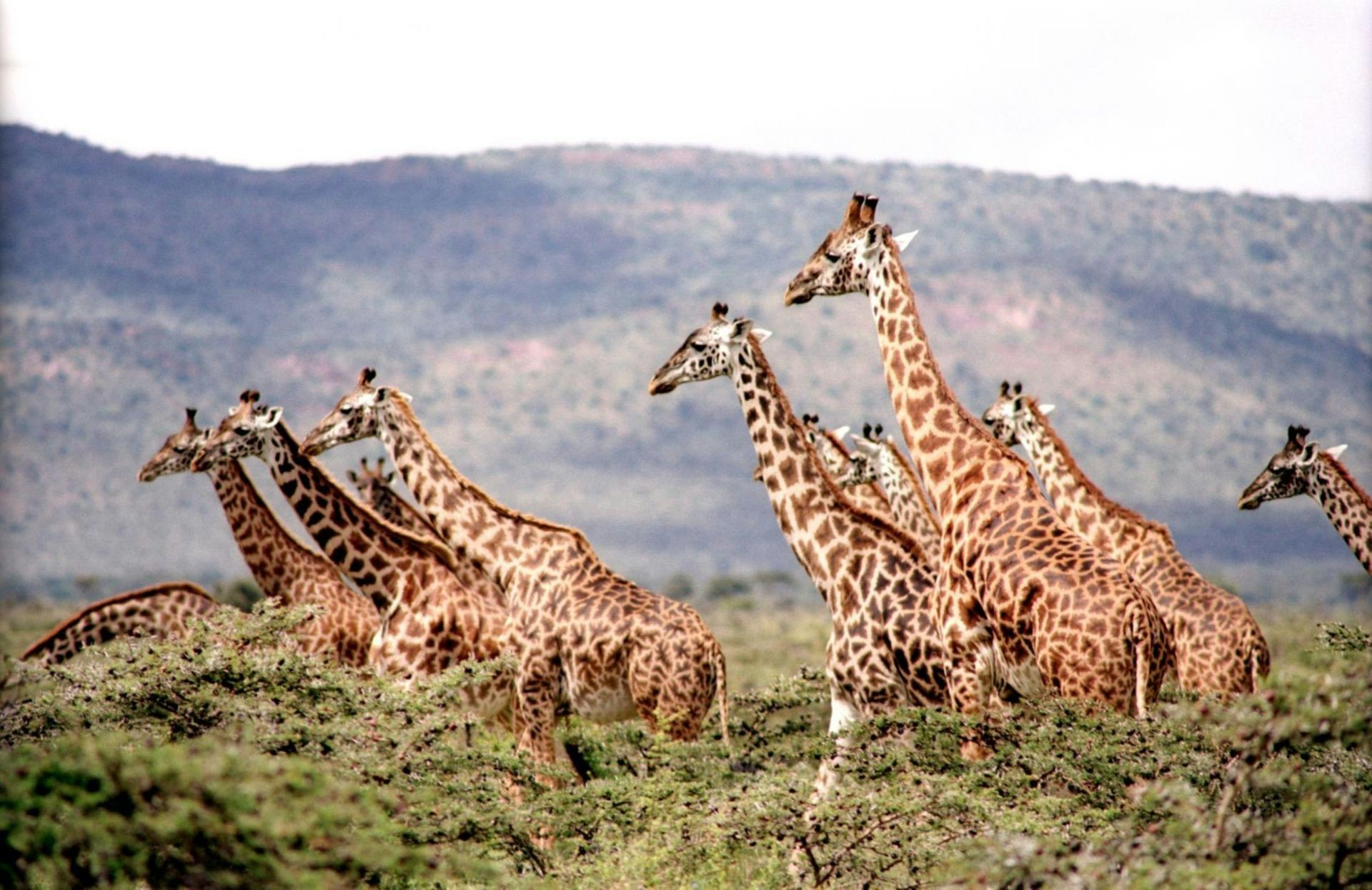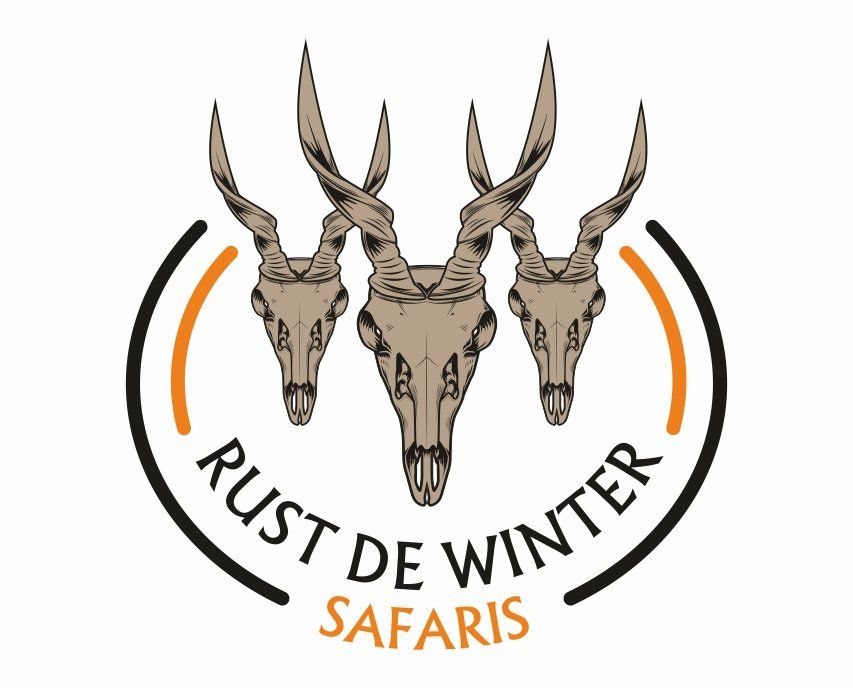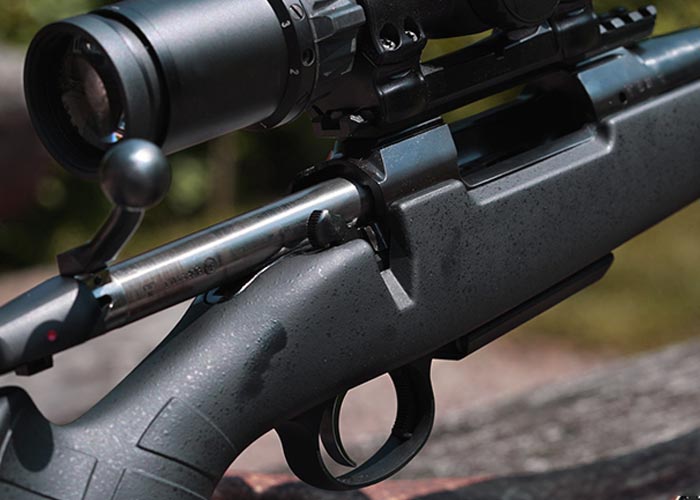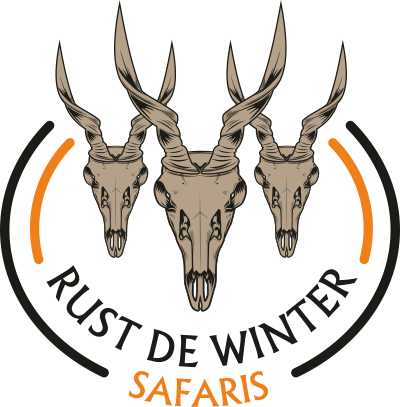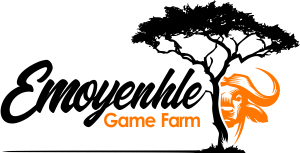Hunting in South Africa
What you need to know
Written by: Peter Ruddle – A Licensed Professional Hunter since 1982
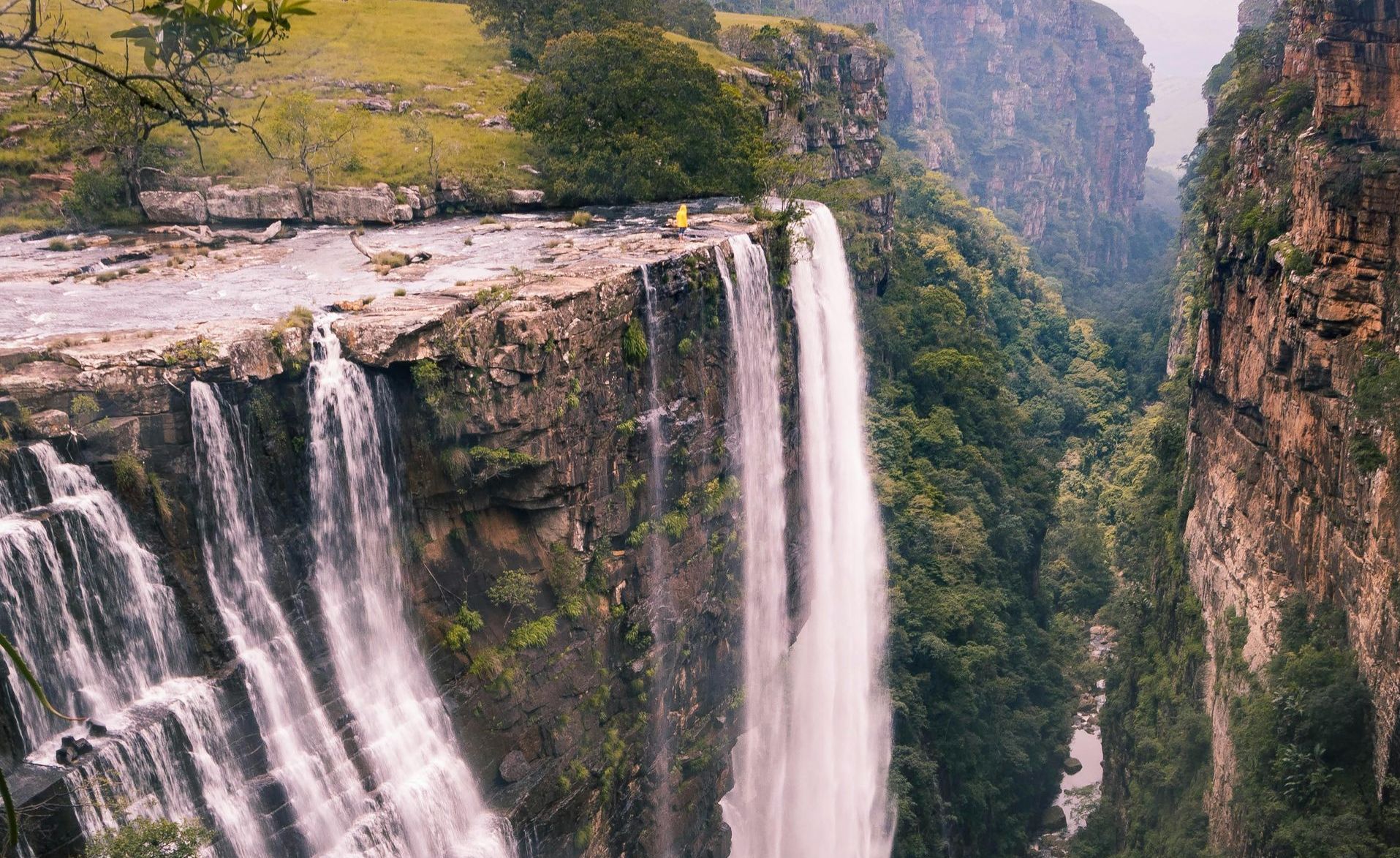
Quick Facts
Capital City: Pretoria
Official Language: 12 official languages
Currency: Rand (ZAR)
Size: 1,221,037 Km2 (471,000 square miles)
Historical Overview of Hunting in South Africa
Archaeological evidence shows that hunter-gatherer communities in Southern Africa existed well before the emergence of Homo sapiens. The San and Khoi peoples, among the region's oldest indigenous populations, have been hunting for over 11,000 years. The ancient practice is documented through numerous San rock paintings and carbon-dated animal bones found in caves across Southern Africa.
Hunting is deeply woven into the cultural fabric of many South African ethnic groups. For instance, the Zulu people used hunting trenches, remnants of which from the 1800s can still be seen in the Hluhluwe-Imfolozi Game Park in KwaZulu-Natal. The arrival of European settlers in the 16th century marked a significant shift in hunting practices, as firearms began to replace traditional weapons like spears and bows. By the late 19th and early 20th centuries, hunting had evolved from a necessity for food to a pursuit for sport.
Economics have always been a driving force behind hunting in South Africa. Early European settlers capitalized on the abundance of wildlife, with the demand for ivory leading many to hunt elephants for profit. This eventually evolved into a commercial venture, where wealthy British and American tourists were taken on safaris. Many of these early hunters documented their experiences in books that became bestsellers in Europe and America, inspiring others to follow in their footsteps. One of the earliest safari books, "Wild Sports of Southern Africa" (1837) by Cornwallis Harris, is a notable example.
Today, professional hunting in South Africa is a well-regulated industry. Each of the country's nine provinces has its own conservation ordinances, and professional hunters must be licensed in each province where they operate.
Conservation Areas and Private Lands
South Africa's conservation efforts are divided into four primary categories:
- National Parks: These cover approximately 4,000,000 hectares, or over 3% of the country, with the Kruger National Park being the most famous. Hunting is strictly prohibited in these government-managed areas.
- Provincial Parks: Managed by provincial and local governments, some of these public nature reserves may allow hunting, depending on their protected status. Together with national parks, these areas bring the total land under biodiversity conservation by some form of government management to 9.2%.
- Private Nature Reserves: Many privately-owned game and nature reserves focus on ecotourism, while others depend on hunting to offset the high costs of management, particularly due to the challenges posed by rhino poaching.
- Game Ranching: As of 2016, there were over 5,000 game ranchers and more than 4,000 mixed game and livestock farms registered in South Africa, along with over 6,000 unregistered properties. These ranches, covering more than 25% of the country's land, are where most hunting in South Africa occurs.
Game Ranching and Breeding
There is often confusion between game ranching and game farming. Game farming refers to smaller properties where wildlife is intensively managed to produce marketable products. In contrast, game ranching involves larger operations where income is generated from ecotourism, photographic safaris, trophy hunting, and live game sales.
The game ranching industry took off in the early 1970s when farmers, particularly those on marginal agricultural land, began to recognize its potential. These pioneers converted traditional livestock and crop farms into wildlife habitats, reintroducing wildlife from provincial nature reserves. This shift significantly boosted the industry, reclaiming vast areas of land for wildlife.
Most game ranches are enclosed by high fences, ranging in size from 800 hectares (2,000 acres) to 80,000 hectares (196,000 acres). These fences serve to establish ownership of the wildlife and to enhance the variety and number of animals available for hunting throughout the year.
As of May 2022, it was estimated that nearly 20 million game animals roamed private lands (game ranches and farms), compared to the 5 to 6 million animals in government reserves. The growth of game ranching has not only improved the overall quality of trophies but has also made trophy fees more affordable. For example, sable antelope trophy fees have halved in the past decade, with trophy sizes increasing from 36 inches to an average of 40 inches.
Climate and Hunting Seasons
Trophy hunting is available year-round in South Africa. However, upland and waterfowl hunting is generally restricted to the non-breeding season, which falls in June, July, and August. Most of South Africa experiences summer rainfall, except for the Western Cape, which has a Mediterranean climate and receives most of its rain in winter. Summer temperatures can be extremely hot, so hunting usually occurs early in the morning and late in the afternoon. Due to the heat and summer rains, most hunters prefer the cooler months between mid-April and mid-September.
In winter, many hunting areas experience freezing temperatures in the mornings and at night, with frost and even snow at higher elevations. Dressing in layers is advisable, as daytime temperatures can warm up significantly, but drop sharply after sunset.
Best Hunting Season
The best hunting season in South Africa varies depending on the region and the species you’re targeting, but generally, the prime time for hunting is during the winter months, from May to August. During this period, the weather is cooler and drier, making it easier to track animals as they gather around water sources. The vegetation is also less dense, improving visibility for hunters.
In the northern regions like Limpopo and Mpumalanga, winters are mild, providing ideal conditions for both plains game and big game hunting. In contrast, the Eastern Cape and Western Cape can experience cold and wet winters, but this is still a favourable time for hunting species adapted to these climates.
If you're interested in specific species or experiences, certain times within this window might be better. For example, the rutting season for antelope, which occurs from late May to early June, offers excellent opportunities for hunting trophy animals. Bird hunting is also popular during these months, with waterfowl and upland birds being particularly abundant.
Overall, planning your hunt between May and August will give you the best chance for a successful and enjoyable experience in South Africa.
Accommodation and Additional Services
South Africa offers a wide range of accommodations for hunters, from 5-star luxury lodges to refurbished farmhouses and luxury tented camps. Most rooms are ensuite, with modern amenities like hot and cold running water and flushing toilets. Meals range from gourmet dishes to traditional fare, often featuring venison from the animals hunted. While not all outfitters include alcoholic beverages in their daily rates, a variety of local beers, wines, and spirits are usually available. South Africa is renowned for its excellent home-grown wines.
Outfitters also provide a variety of in-house facilities and on-site activities, ensuring that non-hunters accompanying the hunting party are well catered for. These services can include visits to national parks, tourist attractions, and activities such as elephant experiences, golf, and spa treatments.
Commonly Hunted Species
South Africa offers a diverse array of species for hunting, including:
- Antelope: Addax, Blesbok (Common, Saddle-backed, White, Yellow), Bontebok, Buffalo (Cape, Water), Bushbuck (Cape, Limpopo), Eland (Cape, Livingstone’s), Gemsbok (Common, Golden, Kalahari, Red), Kudu (Eastern Cape, Southern Greater), Lechwe (Red), Nyala, Sable Antelope, Springbuck (Black, Common, Copper, White), Tsessebe and Waterbuck (Common).
- Predators: Caracal (Lynx), Cheetah, Crocodile (Nile), Hyena (Brown, Spotted), Jackal (Black-backed, Side-striped), Leopard, Lion and Serval.
- Other Species: Baboon (Chacma), Elephant, Giraffe, Hippopotamus, Honey Badger (Ratel), Rhino (Black, White), Warthog, Wildebeest (Black, Blue, Golden), Zebra (Burchell’s, Cape Mountain and Hartmann’s Mountain).
This selection showcases the incredible variety of game available, making South Africa a premier destination for hunting enthusiasts from around the world.
Top Species to Hunt
South Africa offers a wide variety of game species, making it one of the premier hunting destinations in the world. Here are some of the top species to hunt, each providing a unique and challenging experience:
Cape Buffalo
- Region: Limpopo, Mpumalanga, and KwaZulu-Natal.
- Highlights: Known as one of the "Big Five," the Cape Buffalo is highly sought after for its size and strength. It’s a challenging and dangerous hunt, often requiring expert tracking and a steady hand.
Kudu
- Region: Limpopo, Eastern Cape, and Mpumalanga.
- Highlights: Often referred to as the "Grey Ghost" due to its elusive nature, the kudu is one of the most popular plains game species in South Africa. The spiral horns of the kudu are a prized trophy for many hunters.
Impala
- Region: Widespread across most provinces.
- Highlights: The impala is abundant and provides a classic hunting experience. It’s striking coat and impressive horns make it a favourite among trophy hunters.
Springbuck
- Region: Free State, Northern Cape, and Western Cape.
- Highlights: Known for its speed and agility, the springbuck is South Africa’s national animal. It's a popular target for both rifle and bow hunters, especially in the open plains.
Nyala
- Region: KwaZulu-Natal, Limpopo, and Mpumalanga.
- Highlights: This beautiful antelope is prized for its striking vertical white stripes and long spiral horns. Hunting nyala requires patience and skill, as they are often found in dense bush.
Warthog
- Region: Limpopo, Mpumalanga, and Gauteng.
- Highlights: Warthogs are known for their fierce appearance and large tusks. They are a challenging species to hunt due to their unpredictable behaviour and speed.
Eland
- Region: Free State, Limpopo, and Eastern Cape.
- Highlights: The eland is the largest antelope species in the world, making it a highly desirable trophy. Despite their size, they are surprisingly elusive and can cover large distances quickly.
Blue Wildebeest
- Region: Limpopo, North West, and Free State.
- Highlights: Often called the "poor man's buffalo," the blue wildebeest is tough and resilient, providing a challenging hunt. Their large herds and strong migratory instincts make for exciting hunting experiences.
Gemsbuck (Oryx)
- Region: Northern Cape, Free State, and Western Cape.
- Highlights: Renowned for its long, straight horns and ability to thrive in arid conditions, the gemsbuck is a striking animal and a challenging target, particularly in the open desert landscapes.
Zebra
- Region: Limpopo, Mpumalanga, and Eastern Cape.
- Highlights: Hunting zebra requires skill due to their sharp senses and social behaviour within herds. Their distinctive black-and-white stripes make for a unique and striking trophy.
Sable Antelope
- Region: Limpopo and Mpumalanga.
- Highlights: Known for its majestic, curved horns and jet-black coat, the sable antelope is one of the most prestigious and expensive trophies in Africa. They are elusive and often found in dense brush.
Bushbuck
- Region: Eastern Cape, KwaZulu-Natal, and Limpopo.
- Highlights: The bushbuck is a small, elusive antelope that is often found in thick bush near water sources. Their unpredictable behaviour and dense habitats make them a challenging hunt.
Each of these species offers a unique hunting experience, catering to a range of preferences from dangerous game to plains game, and they collectively contribute to South Africa's reputation as a world-class hunting destination.
Hunting Laws and Regulations in South Africa
Hunting, including recreational hunting by international visitors, is legal and available across all South African provinces. Each province has its own nature conservation ordinances and holds significant authority over wildlife management, more so than the national government. For example, while South Africa has a unified national driver’s license, professional hunters and outfitters must obtain separate licenses to operate in each province where they intend to hunt. All hunting licenses and permits are issued by provincial government offices.
Although hunting regulations can vary from province to province, there are many commonalities across the board. Some of the key regulations include:
- International Hunters: Non-resident hunters must be accompanied by a registered professional hunter and must use a licensed outfitter.
- Licensing Requirements: Outfitters and professional hunters need to be licensed in each province where they operate.
- Dangerous Game Hunting: Professional hunters require a specific license to conduct safaris for dangerous game; otherwise, they are restricted to hunting plains game.
- Licenses and Permits: Hunting licenses and permits must be arranged before the hunt begins.
- Exemption Certificates: Game ranches with exemption certificates or certificates of adequate enclosure may apply for exceptions to provincial hunting regulations.
- Calibre Requirements: Minimum calibre requirements exist in some provinces, with a .375 calibre generally required for hunting dangerous game.
- Shooting from Vehicles: Regulations on shooting from a vehicle vary; some provinces allow it, while others require hunters to be at least 200 meters away from the vehicle before shooting.
- Hunting Hours: Hunting is only allowed during daylight, defined as half an hour after sunrise and half an hour before sunset.
- Night Hunting: Special permits can be obtained for hunting nocturnal species with artificial light.
- Game Quotas and Seasons: Landowners typically determine game hunting quotas and hunting season dates.
Licenses and Permits
The outfitter is responsible for ensuring that both the hunting property and the client have all necessary permits before the hunt begins. These licenses and permits are usually issued by the relevant governmental environmental departments.
- CITES Permits: The Convention on International Trade in Endangered Species (CITES) regulates the import and export of certain endangered or near-endangered species. Hunters must obtain the necessary permits from both the country of origin and the destination country to ensure compliance with these regulations.
- TOPS Permits: A Threatened or Protected Species (TOPS) permit must be obtained for listed species before the hunt. After the hunt, the client must sign the permit to authorize the export of the animal’s parts from South Africa.
- General Hunting Licenses and Permits: Most animals fall under this category. Outfitters are responsible for securing the appropriate provincial hunting permits or licenses. In some provinces, landowners with the correct certifications may be exempt from requiring a hunting license.
Given the complexity of these regulations, it is advisable for hunters to rely on their outfitter to ensure all documentation is in order. However, it is prudent to double-check that all necessary CITES and TOPS permits are prearranged to avoid any issues during the hunt or when exporting trophies.
Firearms and Ammunition
It is legal to bring hunting firearms into South Africa, but there are specific limitations and regulations to be aware of:
- Airline Regulations: Before booking your flight, confirm that the airline permits the transportation of firearms, as policies vary.
- Calibre Requirements: The minimum calibre for plains game larger than a springbuck is a .270 or 7 mm rifle. A minimum of a .375 is required for hunting giraffes and dangerous game, and full metal jackets or monolithic solids must be used for pachyderms.
- Handguns: Long-barrelled handguns (.357 calibre) with a barrel length of 100-150 mm may be used for hunting plains game.
- Rental Options: To simplify travel, hunters may opt to rent a rifle from their outfitter. This is legal in South Africa, and most outfitters have suitable firearms available for their clients.
Bowhunting
Bowhunting has been legal in South Africa since the mid-1980s. Various types of bows, including recurve, longbows, compound, and crossbows, are permitted. The following standards apply based on the size of the game:
- Category 1 (Small Game): A bow with a minimum draw weight of 40 pounds, generating at least 30 ft/lbs of kinetic energy, and using arrows weighing a minimum of 300 grains.
- Category 2 (Medium Game): A bow with a minimum draw weight of 50 pounds, generating at least 50 ft/lbs of kinetic energy, and using arrows weighing a minimum of 400 grains.
- Category 3 (Large Game): A bow with a minimum draw weight of 60 pounds, generating at least 60 ft/lbs of kinetic energy, and using arrows weighing a minimum of 500 grains.
- Category 4 (Cape Buffalo): A bow with a minimum draw weight of 80 pounds, generating at least 80 ft/lbs of kinetic energy, and using arrows weighing a minimum of 750 grains.
- Category 5 (Giraffe): A bow with a minimum draw weight of 90 pounds, generating at least 90 ft/lbs of kinetic energy, and using arrows weighing a minimum of 750 grains.
- Pachyderms: The hunting of pachyderms (elephants and rhinos) with a bow is prohibited.
Additional conditions include the requirement of 5% additional kinetic energy for mechanical broadheads, and broadheads must have at least two cutting edges. The minimum arrow length is set at 50 cm.
Trophy Export/Import Restrictions
South Africa adheres to the International Union for Conservation of Nature (IUCN) guidelines and has robust conservation management strategies in place. Legally hunted trophies can be exported through a registered taxidermist and shipping company, provided they meet the importing country’s regulations. No raw meat, skins, or other derivatives may be exported without a veterinary clearance certificate to prevent the spread of diseases like foot-and-mouth.
Documentation required for trophy export includes:
- A copy of the SA Professional Hunter Register and Trophy Export Application, signed by the client, professional hunter, and outfitter.
- A signed Hunting Permit, depending on the species and province.
- A CITES Import Permit for Appendix I species.
- A Nature Conservation Exemption Permit or Certificate of Adequate Enclosure (CAE).
- Transfer of Hunting Rights from Landowner to Hunting Outfitter.
- Permission to hunt from Outfitter to Client.
- A signed TOPS Hunting Permit, if applicable.
Travel Information
When planning your trip, ensure that you have the most current visa and health information.
- Visas: A valid passport and visa are required to enter South Africa. The passport must be valid for at least 30 days beyond your intended exit date and have at least two blank pages for each entry. Visa requirements vary by country, so check with your nearest South African diplomatic mission for specific details.
- Letter of Invitation: When applying for a temporary firearm importation permit, you will need a letter of invitation from your outfitter. Keep a copy of this letter and proof of firearm ownership in your gun case in case authorities request it.
- Currency Restrictions: Any cash amount over ZAR 25,000 (approximately USD 1,300) must be declared upon entering the country. The same amount applies for export unless a higher amount was declared upon entry.
- Health Precautions: Visit your doctor at least a month before your trip. Recommended vaccinations and medicines include:
- Cholera: Only required if active cases are reported.
- Hepatitis A & B: Advised for unvaccinated travellers.
- Malaria: Prescription medication is recommended if traveling to malaria-prone areas.
- Rabies: Seek medical attention if bitten by an animal behaving oddly.
- Typhoid: Advised for most travellers.
- Yellow Fever: Required if coming from a country where the virus is present.
Insect repellents are typically provided in hunting camps, and your outfitter will keep you updated on any specific health requirements.
By following these guidelines and working closely with your outfitter, you can ensure a safe and legally compliant hunting experience in South Africa.
Provinces
South Africa is divided into nine provinces, each offering distinct landscapes and unique hunting experiences. The smallest and most densely populated province is Gauteng, while the Northern Cape, the largest province, covers a third of the country's landmass but has the fewest residents. Throughout these provinces, diverse hunting opportunities are available, making South Africa a prime destination for enthusiasts. Although South Africa has 11 official languages, English is widely spoken, simplifying travel for English-speaking visitors. Below is a brief overview of each province's hunting and tourist highlights:
Eastern Cape
Capital: Bisho
Primary Language: isiXhosa
Area: 168,966 km² (13.8% of the country)
Population: 6,497,100 (11.5% of the total population)
Airports: East London (ELS) - King Phalo Airport, Gqeberha (PLZ) - Chief Dawid Stuurman International Airport
The Eastern Cape offers diverse ecosystems ranging from the semi-arid Karoo to lush coastal plains. This province, once impacted by over-hunting, has successfully restored its wildlife populations, providing opportunities to hunt species like buffalo, Eastern Cape kudu, grey rhebuck, and Cape grysbok. Unique hunting methods in the region include blue duiker hunts with Jack Russell Terriers and caracal hunts using hound packs. Additionally, Rhino Vita Dart Hunts allow for non-lethal hunting experiences aimed at conservation. Specific permits, such as TOPS and CITES, are required for certain species, and local outfitters manage the necessary documentation.
Free State
Capital: Bloemfontein
Primary Language: Sesotho
Area: 129,825 km² (10.6%)
Population: 2,889,900 (5.1%)
Airport: Bram Fischer Airport (BFN), Bloemfontein
The Free State, characterized by its Highveld grasslands and Maluti Mountains, offers a variety of hunting opportunities. Species such as black wildebeest, grey rhebuck, gemsbok, blesbok, and springbok are common targets. The region’s agriculture, particularly maize and sunflower farming, attracts numerous birds, making it a prime spot for bird hunting. Horseback hunts for free-range eland and grey rhebuck in the Maluti Mountains provide a unique experience, and night-time small predator hunts are also available.
Gauteng
Capital: Johannesburg
Primary Language: isiZulu
Area: 18,178 km² (7.7%)
Population: 14,273,800 (25.3%)
Airport: Johannesburg OR Tambo International Airport (JNB)
Gauteng, meaning "place of gold," is South Africa’s most urbanized province and a major gateway to Southern Africa. Despite its urban environment, hunting opportunities are plentiful within an hour’s drive from Johannesburg. The province features Highveld and Bushveld landscapes, offering a range of species including black wildebeest, springbok, kudu, and impala. Many hunting destinations also provide first-class accommodations and facilities for weddings and events. For non-hunters, various tourism options are available, including visits to lion and cheetah rehabilitation centres and elephant interaction experiences.
KwaZulu-Natal
Capital: Pietermaritzburg
Primary Language: isiZulu
Area: 94,361 km² (7.7%)
Population: 11,067,500 (19.6%)
Airport: Durban, King Shaka International Airport (DUR)
KwaZulu-Natal is nestled between the warm Indian Ocean and the Drakensberg Mountains, offering diverse ecosystems such as protected wetlands and evergreen forests. Zululand, in the northern part of the province, is the primary hunting area, historically known as the hunting grounds of Zulu kings. Species such as nyala, common reedbuck, and grey rhebuck are commonly hunted here, while the Natal Midlands offer excellent free-range eland hunting. The region's agricultural activities also attract various bird species, making it ideal for bird shooting.
Limpopo
Capital: Polokwane
Primary Language: Sepedi
Area: 125,755 km² (10.3%)
Population: 5,774,600 (10.2%)
Airports: Polokwane International Airport (PTG), Phalaborwa Airport (PHW), Hoedspruit Eastgate Airport
(HDS)
Limpopo, named after the river forming its northern border, is a rural province with striking landscapes ranging from the Waterberg Mountains to the Mapungubwe archaeological site. The province is known for its Bushveld and Lowveld regions, which make up around 80% of South Africa's hunting industry. The Lowveld offers traditional “Big 5” hunting, while the Bushveld is celebrated for its game ranches. Popular hunting targets include buffalo, kudu, sable, and zebra, with rarer species like roan antelope and tsessebe also available.
Mpumalanga
Capital: Nelspruit
Primary Language: siSwati
Area: 79,495 km² (6.3%)
Population: 4,442,500 (7.9%)
Airport: Kruger Mpumalanga International Airport (MQP), Nelspruit
Mpumalanga, meaning "place of the rising sun," is known for its breath-taking landscapes, including the Kruger National Park and Blyde River Canyon, the third largest in the world. The province offers two distinct hunting terrains: the frost-free Lowveld, known for “Big Game” hunting, and the Highveld, characterized by its alpine grasslands. In the Lowveld, hunters can pursue dangerous game such as lion and leopard, while the Highveld offers opportunities for species like eland, springbok, and black wildebeest. The region is also renowned for bird hunting and dog field trial events.
Northern Cape
Capital: Kimberley
Primary Language: Afrikaans
Area: 372,889 km² (30.5%)
Population: 1,213,500 (2.1%)
Airports: Kimberley Airport (KIM), Upington International Airport (UTN)
The Northern Cape, South Africa's largest and least populated province, is known for its harsh desert climate and expansive landscapes, including the Kalahari Desert and Namaqualand. This province is home to desert-adapted game species like gemsbok, springbok, and red hartebeest. Some game ranches also offer opportunities to hunt predators such as lions and leopards. The region is known for its excellent shotgun shooting, with species such as ostriches and sandgrouse being common targets.
North West
Capital: Mahikeng
Primary Language: Setswana
Area: 104,882 km² (8.6%)
Population: 3,854,400 (6.8%)
Airport: Johannesburg OR Tambo International Airport (JNB)
The North West province, also known as the Platinum Province, is characterized by a mix of Kalahari Desert remnants, Highveld plateaus, and Bushveld. This diverse landscape supports a wide range of species, from buffalo to gemsbok, and offers both Highveld and Lowveld hunting opportunities. The province is particularly noted for its bow hunting experiences, with game ranches often providing supplemental feeding to attract wildlife. Colour variant species such as different types of blesbok and springbok are also prevalent.
Western Cape
Capital: Cape Town
Primary Language: Afrikaans
Area: 129,462 km² (10.6%)
Population: 6,508,700 (11.5%)
Airport: Cape Town International Airport (CPT)
The Western Cape, known for its stunning landscapes and vibrant cultural scene, is one of South Africa’s top tourist destinations. The province offers a range of hunting experiences, from short plains game hunts to more extended excursions. Inland, the climate becomes more arid, providing opportunities to hunt species like gemsbok and springbok. The Western Cape is also known for its culinary experiences, often combined with hunting packages. In addition to hunting, visitors can enjoy fine dining, wine tasting, and bird hunting.
Travel and Accommodation
Most international hunters fly into Johannesburg OR Tambo International Airport, which serves as the primary hub for connecting flights to other parts of the country. Many outfitters meet their clients directly at this airport, especially those operating in Limpopo.
South Africa offers a wide range of accommodation options, from luxurious five-star hotels to cosy bed and breakfasts. Visitors can also explore various transportation and tour options, including wildlife safaris and adventure experiences. For more information, visit the South African Tourism website.
Professional Hunting Associations
Membership to a recognised hunting association is not mandatory for outfitters in South Africa. The three main hunting organisations are:
- Professional Hunters Association of South Africa (PHASA): PHASA is the largest hunting association in South Africa, advocating for the professional hunting industry at all levels of government and engaging with international hunting and conservation organizations.
- Custodians of Professional Hunting & Conservation in South Africa (CPHC-SA): This association was founded by professionals committed to ethical hunting practices and conservation. They oppose captive-bred lion hunting and work to ensure that hunting supports good conservation practices without harming wildlife populations.
- SA Hunters and Game Conservation Association: Is the largest organisation in South Africa focused on promoting ethical hunting practices, wildlife conservation, and the sustainable management of game. Established in 1949, the association serves a large community, mostly meat hunters, offering education, advocacy, and support for responsible hunting, conservation efforts, and the protection of South Africa's natural heritage.
For more information on hunting in South Africa, or to connect with an association members, contact PHASA or CPHC-SA. Rust De Winter Safaris are members of PHASA.
South African Slang
South African slang is a vibrant mix of languages and cultures, reflecting the country's diverse population. Here are some common South African slang terms you will often hear used around camp:
Aweh: A greeting or expression of agreement, like "Hey" or "Cool."
Babelas: A hangover.
Bakkie: A pickup truck.
Boet: Similar to "bru," it means brother or friend.
Braai: Barbecue meat (often used when referring to a braai, a South African barbecue).
Bru: Brother or friend; similar to "mate" or "bro."
Chommie: Friend (derived from the Afrikaans word "maatjie").
Dop: An alcoholic drink.
Eish: An expression of surprise, disbelief, or exasperation.
Howzit: A casual greeting, similar to "How are you?" or "What's up?"
Ja, nee: Literally means "yes, no," but it's used to express agreement or affirmation.
Jol: To party or have a good time.
Kiff: Cool, nice, or awesome.
Lekker: Great, nice, or cool.
Robot: Traffic light.
Sharp: All good, okay, or goodbye.
Sjoe: An expression of surprise, admiration, or relief.
Yebo: Yes (often used in a more enthusiastic way).
These terms are just a glimpse into the rich linguistic landscape of South Africa, where multiple languages blend to create unique and expressive slang.
